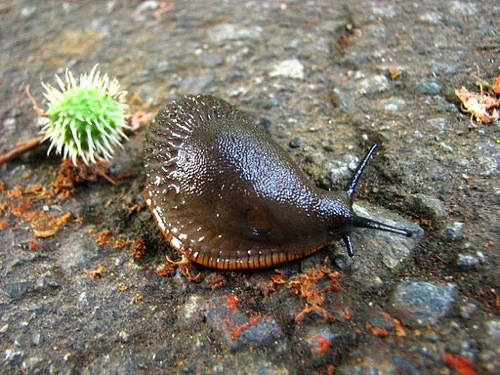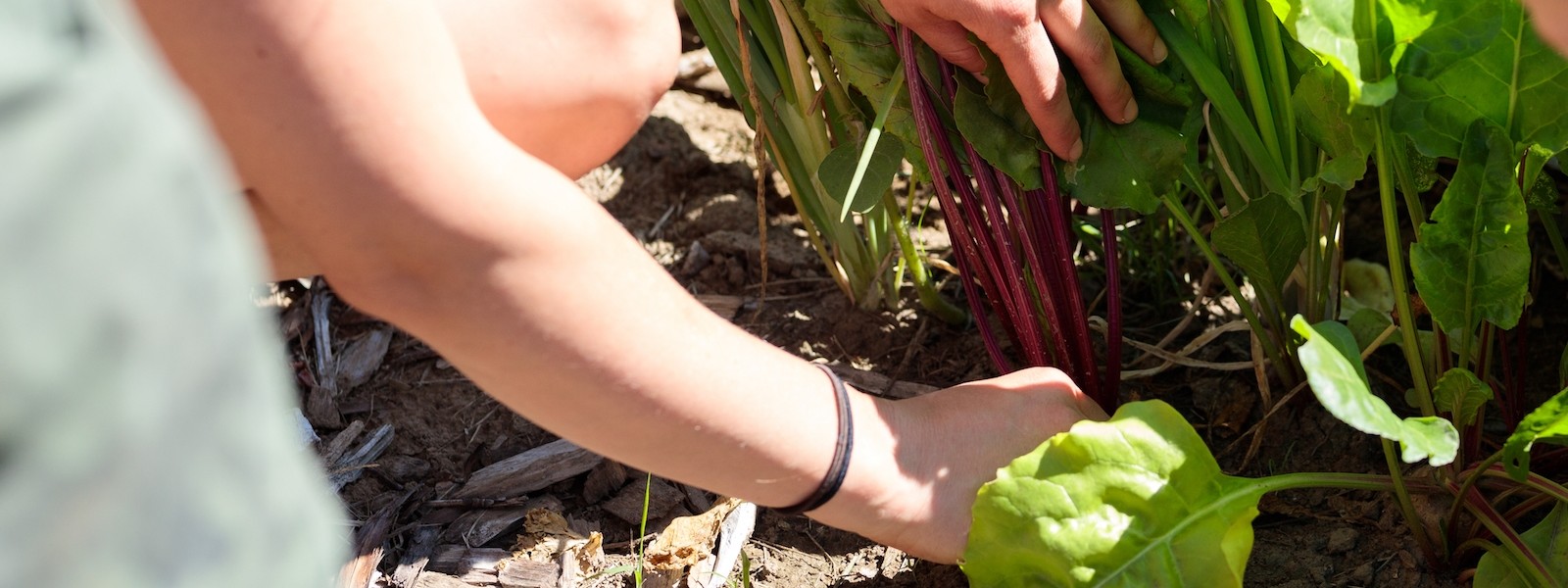Pest: Slugs
Wet weather brings slugs which wreak havoc on your plants close to the ground, especially those that are very moist like lettuce, cabbage, and many other greens.
Slugs are members of the mollusk family and are shades of brown, black and grey. They excrete a slimy coating to protect themselves and to make traveling easier, leaving a trail of slime. They feed mostly at night but also on overcast or rainy days; often found under debris during warmer, drier periods.

Life Cycle
Adults lay eggs in moist soil or under rocks. Eggs hatch in 2-4 weeks and young grow 5 months to 2 years before reaching maturity. Slugs are hermaphroditic, meaning each one has both male and female reproductive organs and can lay hundreds of eggs a year. They go dormant in dry or cold weather.
Plants They Attack
They love young seedlings, many mature perennials and annuals and tender vegetables like lettuce and ripening strawberries, tomatoes and peppers. They won’t eat plants with strongly fragranced foliage or fuzzy leaves, including lamb’s ears, lavender, salvias, and most herbs.
Spot the Damage
Slugs can do significant damage to seedlings and other tender growth, devouring entire seedlings overnight. They are most damaging in wet years or regions. Look for irregular holes in leaves, along the margin or in the center. If no slugs are visible, look for their dried slime trails or visit the area at night with a flashlight.
Preventative Actions
- Clear your garden of debris. Slugs hide in and eat decaying plant matter.
- Water only in morning hours, allowing foliage to dry before nighall.
- Hand-pick slugs and place in a container of soapy water.
- Attract slugs to saucers of beer in your garden where they will drown. Find a shallow plastic container such as a hummus or tofu container. Sink it in to the ground near the base of the plants being eaten so that about an inch of the container is above the soil. Fill the container with cheap beer and a heavy pinch of salt. Check trap daily, remove dead bugs, and refill with a fresh mixture of beer and salt.
- Protect seedlings by laying small, flat circles of window screening around their base. Slugs detest rough surfaces. You can also use wood ashes or pine needles.
- Control weeds and grow your crops away from moist, shaded habitats.
Organic Product Controls
Use diatomaceous earth and iron phosphate baits.
Sources
CCF staff
Good Bug, Bad Bug by Walliser 2008
The Organic Gardener’s Handbook by Ellis and Bradley 1996
Interested in learning more? The Grower’s Library at Johnny’s Selected Seeds may have the information you’re looking for.

